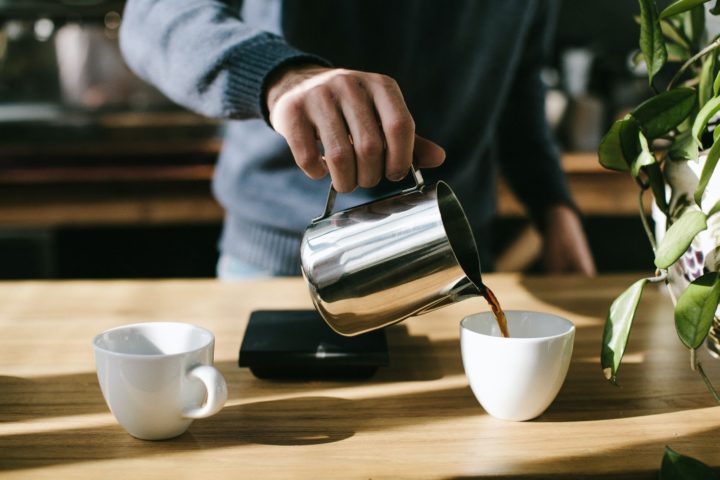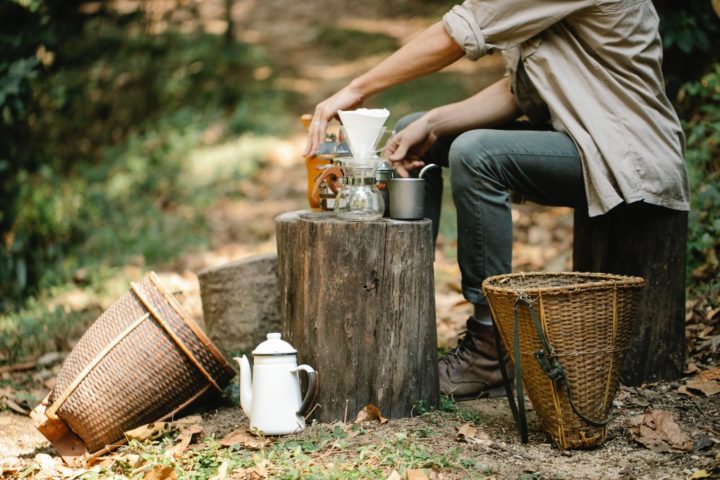Moe’s Blogger Advisory Council
If you follow me on Foursquare, then you know that we go to Moe's regularly. I love Moe's! My entire family loves Moe's. I usually get the Joey Bag of Donuts burrito and we...
Coffee is a universally loved beverage, but its preparation and consumption vary greatly from country to country, reflecting the diverse cultures and traditions that have embraced it.
By exploring these different coffee styles and brewing techniques, we can embark on a global coffee journey without ever leaving our kitchens.

Photo by Lina Kivaka, www.pexels.com
Espresso, originating from Italy, serves as the foundation for a myriad of coffee drinks worldwide. By altering the ratios of espresso, milk, and foam, or adding flavorings, a broad spectrum of coffee beverages is achieved.
The term macchiato means ‘stained' or ‘spotted' in Italian. In its most traditional form, an espresso macchiato is a shot of espresso ‘stained' with a small amount of foamed milk. This provides a slight mellowness to the potent shot without masking the coffee's bold flavor. Here are the basics of making a macchiato:
In contrast, a latte macchiato involves ‘staining' milk with coffee. It consists of steamed milk topped with a shot of espresso, creating a layered effect.
Latte, another espresso-based drink, is mellower and creamier than a macchiato. Originating from Italy, a traditional latte comprises one part espresso, two parts steamed milk, and a cap of foam on top. Here's a simple way to prepare a latte at home:
The simplicity of a latte makes it a perfect canvas for variations like adding syrups for flavor or creating latte art.
Both the macchiato and latte begin with a shot of espresso but differ in the volume of milk and foam added. A macchiato has a higher coffee-to-milk ratio, making it stronger and bolder.
A latte, on the other hand, has more milk, resulting in a creamier, smoother, and milder beverage. Understanding these differences allows you to choose the beverage that best suits your taste.
Coffee brings people together across cultures! From region to region, there are unique ways to prepare and enjoy this delicious drink. This creates a fantastic variety of coffee experiences waiting to be explored by adventurous coffee lovers like you.
This segment takes you on a global journey of coffee styles, where we delve deeper into Turkish Coffee, Café de Olla from Mexico, and Vietnamese Iced Coffee.
Originating from the Ottoman Empire, Turkish coffee is not just a beverage but an integral part of Turkish culture and hospitality. This coffee is renowned for its unique preparation method and the strong, frothy, and aromatic brew it produces.

Photo by Dex Ezekiel on Unsplash
The secret to Turkish coffee lies in its very finely ground beans, which are left unfiltered in the cup. Unlike other coffee brewing methods, the preparation of Turkish coffee involves a direct heat source.
The coffee, sugar (if desired), and water are added to a small, long-handled pot known as a cezve or ibrik. This mixture is then stirred until well combined and placed on a heat source.
The coffee is heated slowly, allowing it to froth and rise in the pot. Just before it boils over, it is removed from the heat. This heating process may be repeated several times before the coffee is finally poured, ensuring a thick layer of foam—considered the trademark of well-brewed Turkish coffee—forms on top.
https://divinelifestyle.com/layered-bulletproof-coffee-gummies/
North America beckons with Café de Olla, a traditional Mexican coffee that tantalizes your taste buds and offers a window into Mexico's rich cultural heritage. This unique brew gets its sweet and spicy personality from simmering coffee grounds with cinnamon and piloncillo, an unrefined whole cane sugar boasting a deep molasses flavor.
Café de Olla's preparation involves simmering the coffee grounds with piloncillo and cinnamon sticks in a pot of water. The resultant brew is then strained into a cup. Traditionally, this coffee is prepared in an earthen clay pot, which is believed to add its unique flavor, and served in a clay mug, immersing you in a complete cultural experience.
Venturing into Southeast Asia, we encounter the Vietnamese Iced Coffee or cà phê sữa đá—a sweet, creamy concoction that offers a refreshing break from the tropical heat.
This beverage is made using dark-roast coffee (usually of the Robusta variety, which is high in caffeine and has a bold flavor) and sweetened condensed milk, a staple in Vietnamese kitchens.
The process starts with a small amount of condensed milk placed at the bottom of a cup. On top of the cup, a metal filter, or phin, is placed, containing the coffee grounds.
Hot water is then added to the phin, and the coffee slowly drips into the cup over the condensed milk.
Once the dripping stops, the coffee and condensed milk are stirred to combine, poured over a glass full of ice, and it's ready to serve—a perfect balance of robust coffee and sweet, creamy milk.
By exploring these diverse coffee styles, you can embark on a unique journey, savoring the flavors of different cultures right from your kitchen.
Brewing techniques have a significant impact on the final taste of your coffee. From the rapid brewing of an espresso machine to the slow steeping of a French press, let's explore how these methods can help you discover your preferred coffee profile.
The French press brewing method is favored for its simplicity and ability to extract a robust, full-bodied coffee. This technique involves steeping coffee grounds in hot water within the press then manually pushing down the plunger, which separates the grounds from the coffee.
The pour-over method involves pouring hot water over coffee grounds housed in a filter, allowing the coffee to drip slowly into a carafe or cup. This method, offering clean flavors and a lighter body, is perfect for highlighting the subtle characteristics of single-origin coffees.

Photo by Michael Burrows, www.pexels.com
For a smooth, naturally sweet, and less acidic coffee, try cold brewing! This method involves steeping coffee grounds in cold water for an extended period, typically 12-24 hours. The result? A perfect base for delicious iced coffee drinks.
Embracing the diversity of coffee at home allows you to embark on a global journey from the comfort of your own kitchen.
By understanding the basics of espresso-based drinks, exploring global coffee recipes, and experimenting with different brewing techniques, you can discover and indulge in the rich tapestry of coffee culture worldwide.
Calling all coffee lovers! From the bold kick of a macchiato to the creamy hug of a latte, and all the way to the intense flavors of a Turkish brew, there's a whole world of coffee waiting to be discovered by YOU. So grab your mug and get ready for a delicious adventure – explore different coffee styles and find your perfect cup!